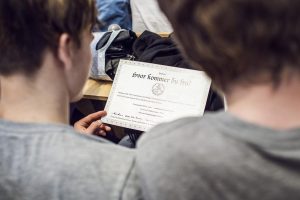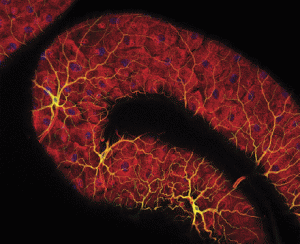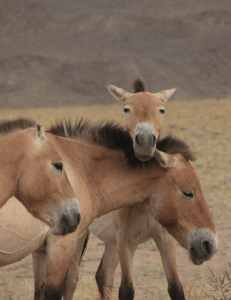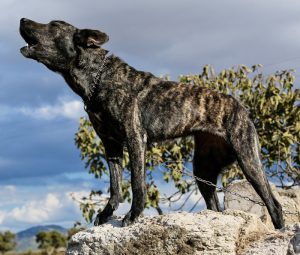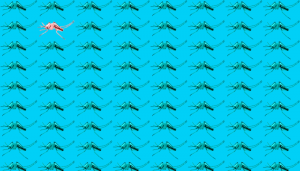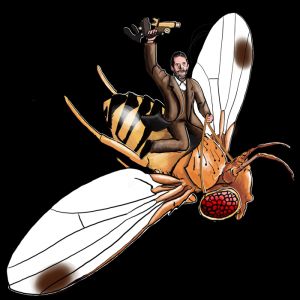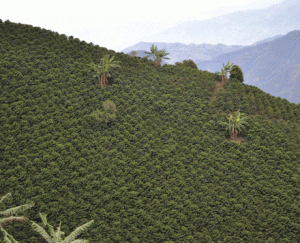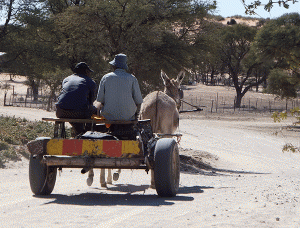Enter your address to receive notifications about new posts to your email.
Science & Publishing
-
Science & Publishing
Genomic study of high school students from across Denmark reveals remarkable genetic homogeneity
People from Denmark are genetically similar to each other no matter which part of the country they come from, report researchers in the journal GENETICS, a publication of the Genetics Society of America. Eight hundred Danish high school students contributed genetic material to the Where Are You From? project, and the data were used to…
-
Science & Publishing
New in G3: glucose biosynthesis, neural tube defects, and seizure suppression
Check out the October issue of G3! Table of Contents Call for Papers Multiparental Populations: A Call for Papers G3 October 2016 6:3015; doi:10.1534/g3.116.035022 Full Text | Full Text (PDF) Investigations A Drosophila LexA Enhancer-Trap Resource for Developmental Biology and Neuroendocrine Research Lutz Kockel, Lutfi M. Huq, Anika Ayyar, Emma Herold, Elle MacAlpine, Madeline Logan,…
-
Science & Publishing
October GENETICS Highlights
Check out the October issue of GENETICS by looking at the highlights or the full table of contents! ISSUE HIGHLIGHTS This Month’s Centennial Articles Fumio Tajima and the origin of modern population genetics, pp. 389–390 Rasmus Nielsen Associate Editor Rasmus Nielsen introduces Fumio Tajima’s 1983 Classic on coalescence. This was one of the founding papers of modern population genetics…
-
Science & Publishing
Genome of fiercely protective Fonni’s Dog reflects human history of Sardinia
A genomic analysis of 28 dog breeds has traced the genetic history of the remarkable Fonni’s Dog, a herd guardian endemic to the Mediterranean island of Sardinia. The results, published in this month’s issue of GENETICS, reveal that the regional variety has developed into a true breed through unregulated selection for its distinctive behavior, and that…
-
Science & Publishing
How studying bakers’ yeast unlocked the secrets of our body’s recycling plants
In the late 1980s, Japanese biologist Yoshimori Ohsumi finally got to run a lab of his own and began casting around for a suitable topic to occupy himself and his new grad students. At 43 years old, he did not consider himself much of a scientific success; he was now hoping to corner a niche of biology…
-
Science & Publishing
Can gene drives survive in the wild?
Efforts to engineer genomes in wild populations have huge potential for good—but the real world is more complicated than the lab. Until now, humans have never been able to seriously consider how to cheat evolution. But now that the CRISPR/Cas9 system has made genome editing easy and efficient, it might be possible to manipulate the…
-
Science & Publishing
Happy 150th to a fruit fly wrangler who changed the world
In Kentucky 150 years ago today, a child was born who would—with the help of a hardy inhabitant of trash cans and fruit bowls— grow up to change the world. That boy was Thomas Hunt Morgan. By the 1900s, the energetic young Morgan had become a well-respected expert investigating questions in experimental embryology and animal regeneration.…
-
Science & Publishing
Friendly dogs with floppy ears: The domestication syndrome
The mild temperament that distinguishes the family dog from its wolf ancestors is just one of a whole array of traits that seem to have evolved during domestication. Domestication syndrome refers to the suite of characteristics commonly observed in domestic animals, including docility, shorter muzzles, smaller teeth, smaller and floppier ears, and an altered estrous…
-
Science & Publishing
Hubby & Lewontin: Problems and Conversations
The beautiful cover of the August issue of GENETICS was created by artist Michele Banks to commemorate the fiftieth anniversary of a pivotal moment in the history of evolutionary biology: the 1966 publication of a pair of GENETICS papers using protein electrophoresis to reveal that natural genetic diversity is bountiful. Thanks to a conversation between…
-
Science & Publishing
New in G3: coffee genome, dog diseases, and mouse infertility
Check out the September issue of G3! Investigations Retrotransposon Proliferation Coincident with the Evolution of Dioecy in Asparagus Alex Harkess, Francesco Mercati, Loredana Abbate, Michael McKain, J. Chris Pires, Tea Sala, Francesco Sunseri, Agostino Falavigna, and Jim Leebens-Mack G3 September 2016 6:2679-2685; Early Online June 24, 2016 doi:10.1534/g3.116.030239 Abstract | Full Text | Full Text…
-
Science & Publishing
Kindred and KhoeSan: African ancestry is tied to ecogeography
Geography and ecology are key factors that have influenced the genetic makeup of human groups in southern Africa, according to new research discussed in the journal GENETICS, a publication of the Genetics Society of America. By investigating the ancestries of twenty-two KhoeSan groups, including new samples from the Nama and the ≠Khomani, researchers conclude that…


